CryptoWall Removal Tips (Uninstall CryptoWall)
CryptoWall is a serious infection that is aimed at extorting your money. It is classified as ransomware, because after it infiltrates your computer it encrypts your data with the RSA-2048 encryption system. Once this process is complete, it creates DECRYPT_INSTRUCTION.TXT, DECRYPT_INSTRUCTION.HTML, and DECRYPT_INSTRUCTION files in the location of your encrypted data.
These files are there to inform you of the fact that your important data has been corrupted and that the only way to get it back is to pay the cyber criminals 500 US dollars. Needless to say, you should not follow these instructions and let them get away with this type of an extortion. What you should do is delete CryptoWall as soon as you can.
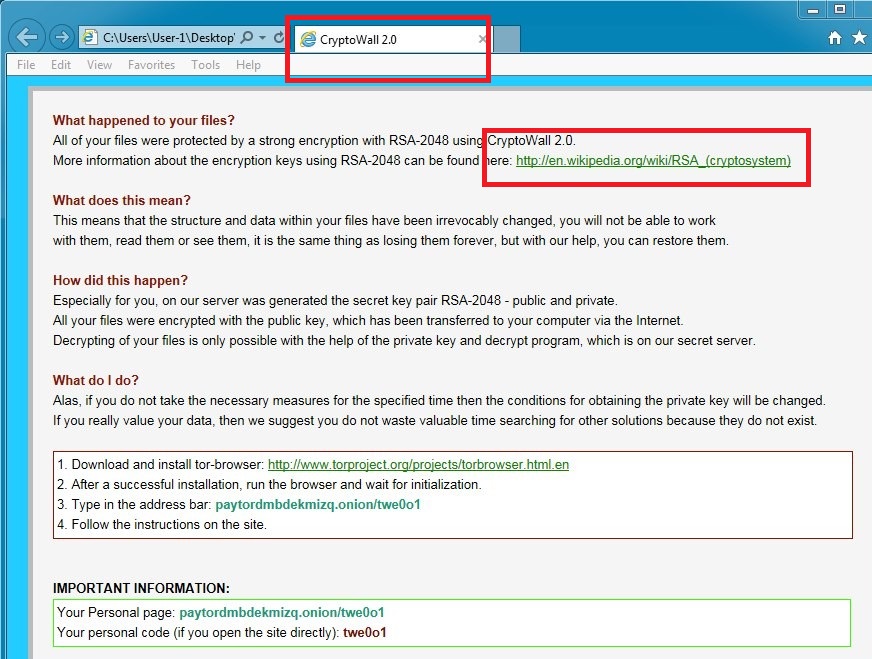
How does CryptoWall work?
CryptoWall spreads online using various deceptive tactics. It can be sent to you in the form of a spam email with a corrupted attachment or link. You may also infect your PC by clicking on a fake advert or downloading software from unreliable or hacked pages. The parasite usually targets unprotected systems, which is why it is so important to have powerful anti-malware installed on your computer. If, however, the virus is already inside, it will not be difficult to notice its presence.
The main symptom of CryptoWall is that it encrypts your documents, presentations, PDF files, photos, videos, game files, music, and other data. It then demands that you pay a so-called ransom for it. This ransom can only be paid via Tor browser, because it makes it easier for the cyber crooks to stay undetected. The sum is usually 1.19 Bitcoins, which is currently over 500 US dollars. If you do not pay the ransom until a set date, they threaten to double it. You should not trust cyber crooks to follow through on their promises. Paying them does not provide you with any guarantees of restoring your data. We suggest that you do no waste your money and instead terminate CryptoWall right away.
How to remove CryptoWall?
Unfortunately, manual CryptoWall removal is not possible as it is a complex malicious threat. You can, however, eliminate CryptoWall from your computer if you implement a reliable anti-malware utility. You can download the malware remover from our page. It will scan your PC and detect all components of the parasite. You will then be able to delete CryptoWall completely and terminate other potential threats. In addition to CryptoWall removal, the anti-malware tool will also help you keep your computer clean in the future. As for your files, you can recover them from backup. If you do not have one, you may want to search the Web for a reliable file decryption software.
Offers
Download Removal Toolto scan for CryptoWall 2.0Use our recommended removal tool to scan for CryptoWall 2.0. Trial version of provides detection of computer threats like CryptoWall 2.0 and assists in its removal for FREE. You can delete detected registry entries, files and processes yourself or purchase a full version.
More information about SpyWarrior and Uninstall Instructions. Please review SpyWarrior EULA and Privacy Policy. SpyWarrior scanner is free. If it detects a malware, purchase its full version to remove it.

WiperSoft Review Details WiperSoft (www.wipersoft.com) is a security tool that provides real-time security from potential threats. Nowadays, many users tend to download free software from the Intern ...
Download|more


Is MacKeeper a virus? MacKeeper is not a virus, nor is it a scam. While there are various opinions about the program on the Internet, a lot of the people who so notoriously hate the program have neve ...
Download|more


While the creators of MalwareBytes anti-malware have not been in this business for long time, they make up for it with their enthusiastic approach. Statistic from such websites like CNET shows that th ...
Download|more
Quick Menu
Step 1. Uninstall CryptoWall 2.0 and related programs.
Remove CryptoWall 2.0 from Windows 8
Right-click in the lower left corner of the screen. Once Quick Access Menu shows up, select Control Panel choose Programs and Features and select to Uninstall a software.
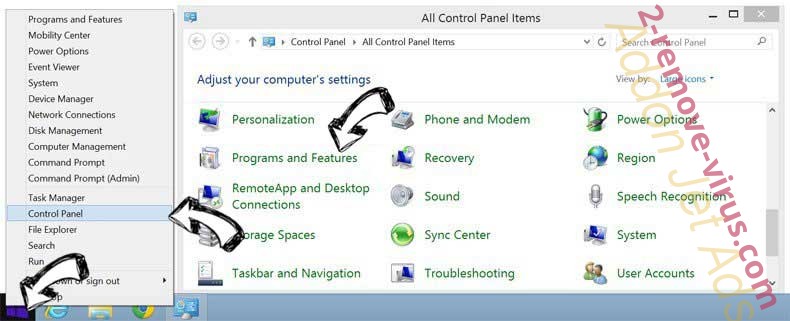

Uninstall CryptoWall 2.0 from Windows 7
Click Start → Control Panel → Programs and Features → Uninstall a program.
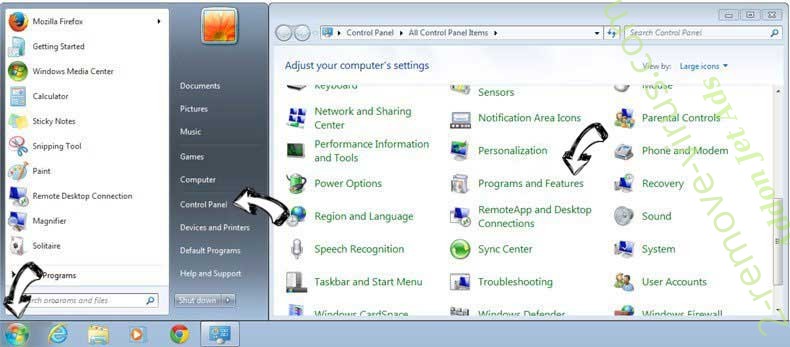

Delete CryptoWall 2.0 from Windows XP
Click Start → Settings → Control Panel. Locate and click → Add or Remove Programs.
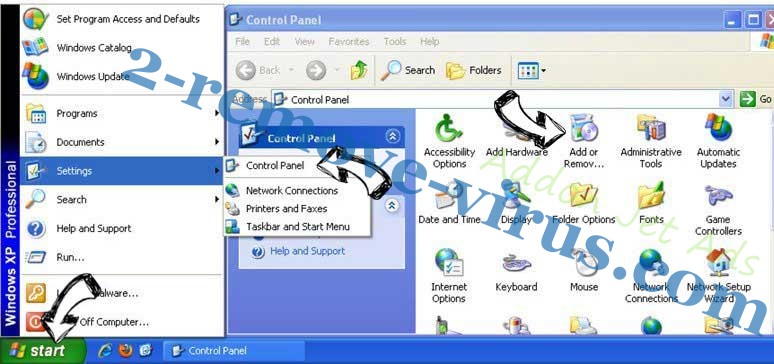

Remove CryptoWall 2.0 from Mac OS X
Click Go button at the top left of the screen and select Applications. Select applications folder and look for CryptoWall 2.0 or any other suspicious software. Now right click on every of such entries and select Move to Trash, then right click the Trash icon and select Empty Trash.
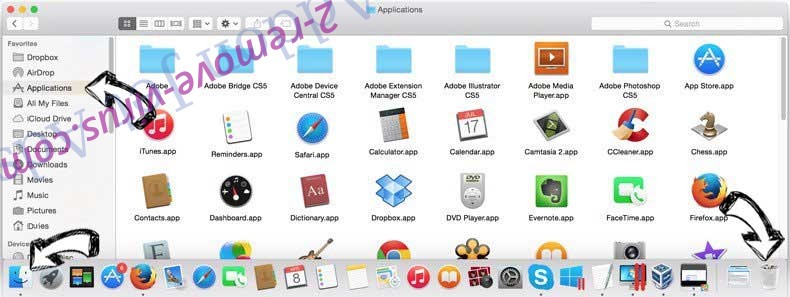

Step 2. Delete CryptoWall 2.0 from your browsers
Terminate the unwanted extensions from Internet Explorer
- Tap the Gear icon and go to Manage Add-ons.

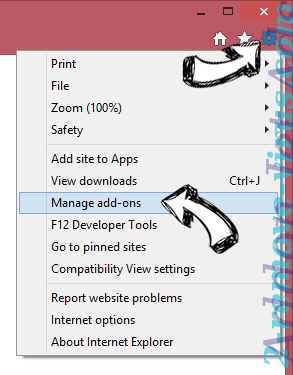
- Pick Toolbars and Extensions and eliminate all suspicious entries (other than Microsoft, Yahoo, Google, Oracle or Adobe)

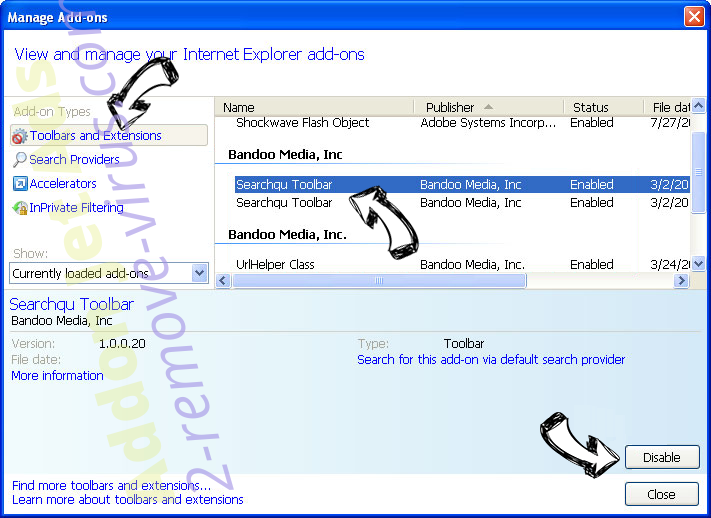
- Leave the window.
Change Internet Explorer homepage if it was changed by virus:
- Tap the gear icon (menu) on the top right corner of your browser and click Internet Options.

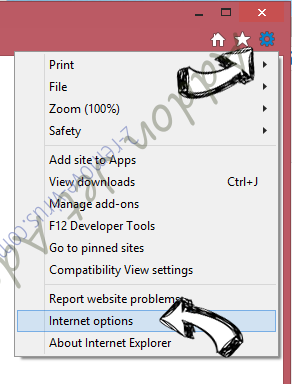
- In General Tab remove malicious URL and enter preferable domain name. Press Apply to save changes.

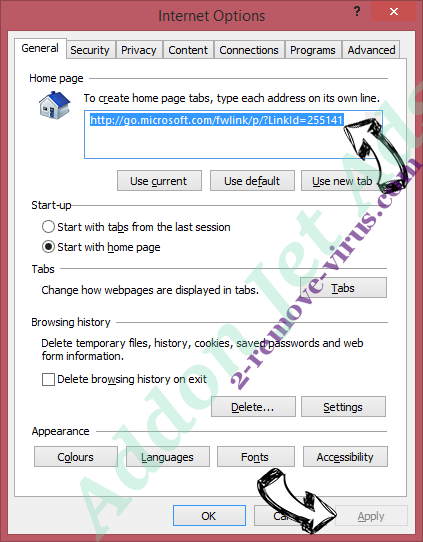
Reset your browser
- Click the Gear icon and move to Internet Options.

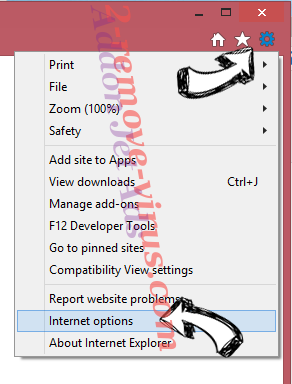
- Open the Advanced tab and press Reset.


- Choose Delete personal settings and pick Reset one more time.

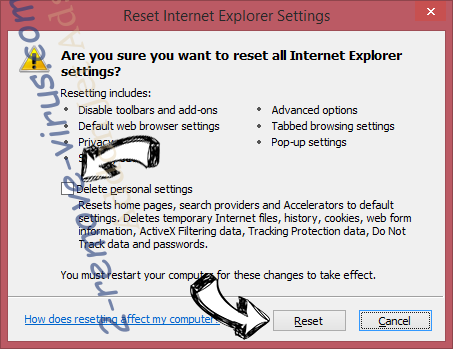
- Tap Close and leave your browser.

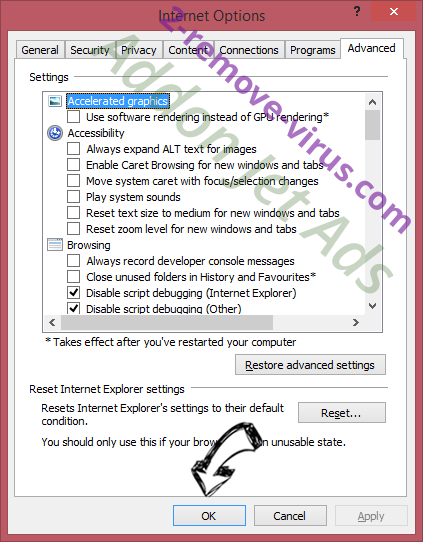
- If you were unable to reset your browsers, employ a reputable anti-malware and scan your entire computer with it.
Erase CryptoWall 2.0 from Google Chrome
- Access menu (top right corner of the window) and pick Settings.

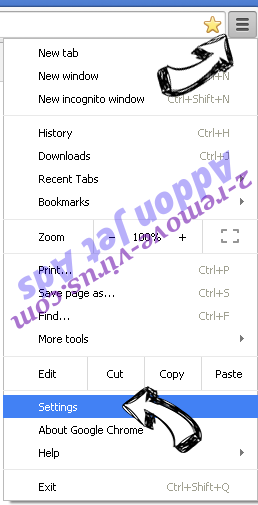
- Choose Extensions.

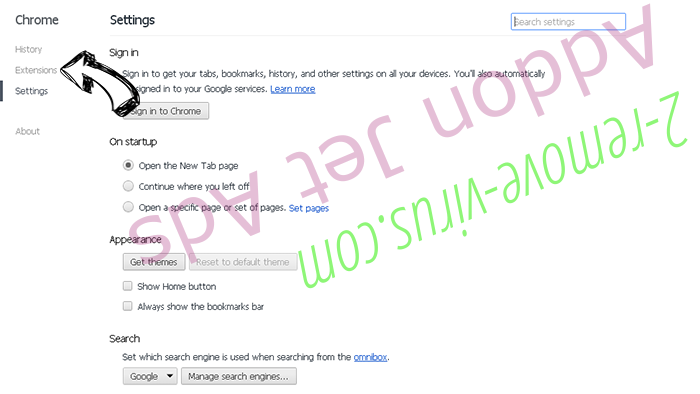
- Eliminate the suspicious extensions from the list by clicking the Trash bin next to them.


- If you are unsure which extensions to remove, you can disable them temporarily.

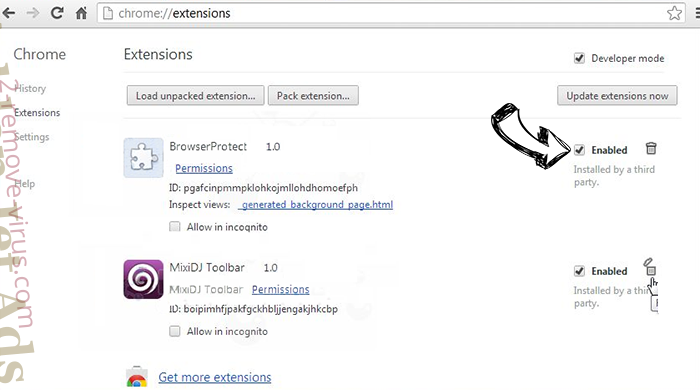
Reset Google Chrome homepage and default search engine if it was hijacker by virus
- Press on menu icon and click Settings.

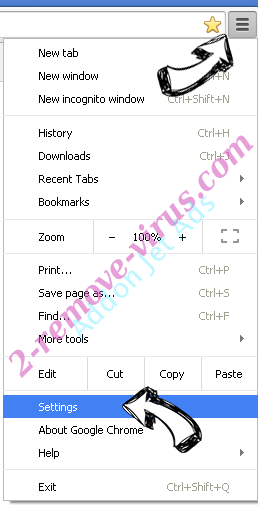
- Look for the “Open a specific page” or “Set Pages” under “On start up” option and click on Set pages.

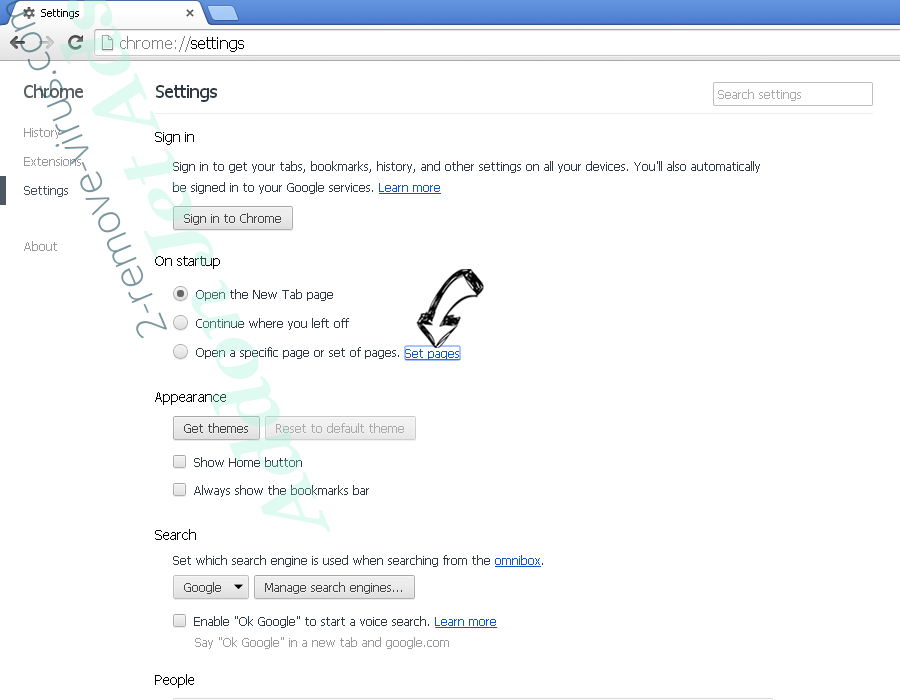
- In another window remove malicious search sites and enter the one that you want to use as your homepage.

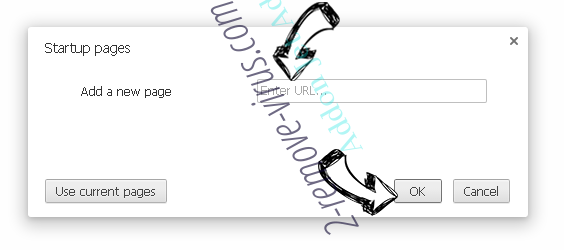
- Under the Search section choose Manage Search engines. When in Search Engines..., remove malicious search websites. You should leave only Google or your preferred search name.

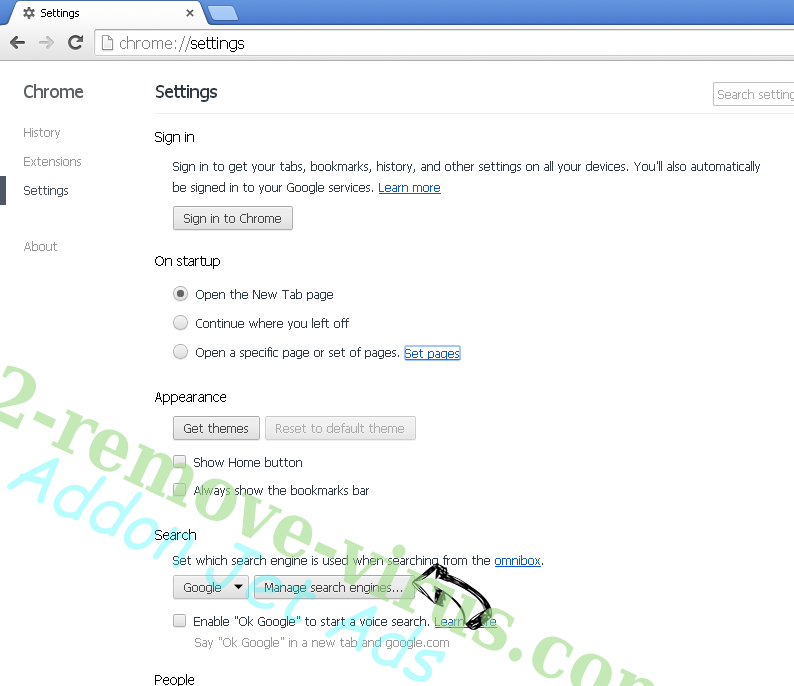

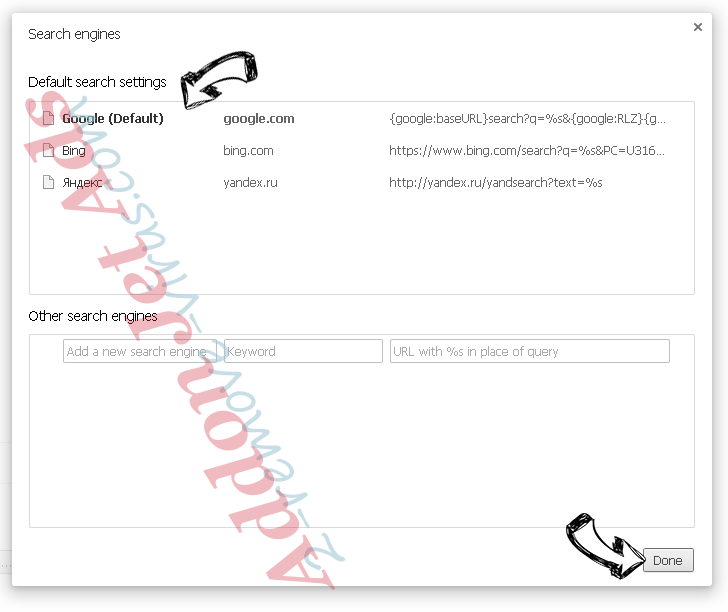
Reset your browser
- If the browser still does not work the way you prefer, you can reset its settings.
- Open menu and navigate to Settings.

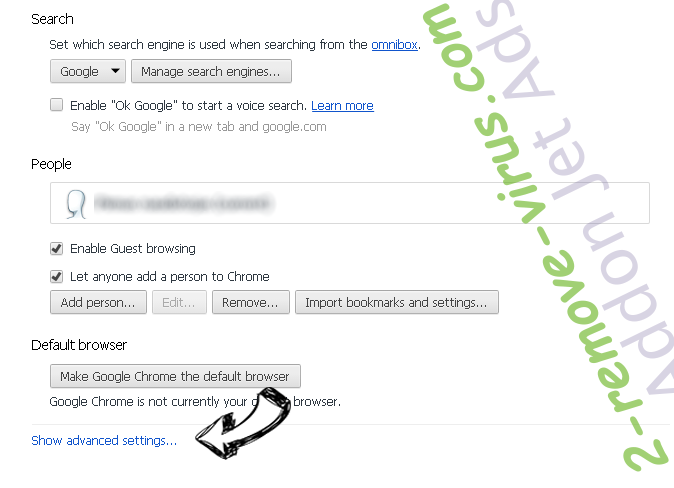
- Press Reset button at the end of the page.

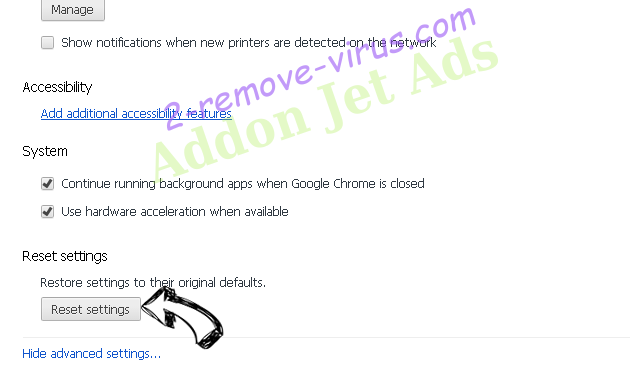
- Tap Reset button one more time in the confirmation box.

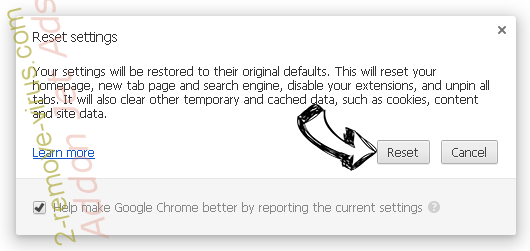
- If you cannot reset the settings, purchase a legitimate anti-malware and scan your PC.
Remove CryptoWall 2.0 from Mozilla Firefox
- In the top right corner of the screen, press menu and choose Add-ons (or tap Ctrl+Shift+A simultaneously).

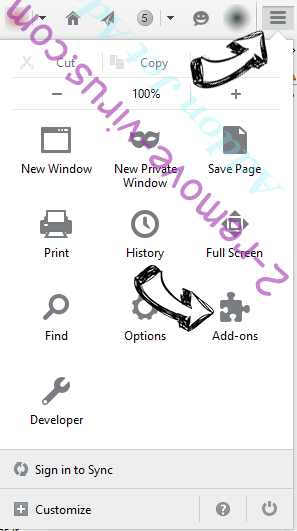
- Move to Extensions and Add-ons list and uninstall all suspicious and unknown entries.

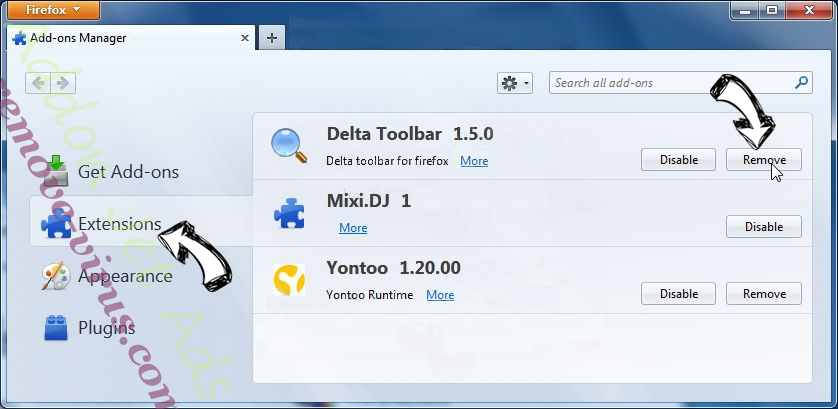
Change Mozilla Firefox homepage if it was changed by virus:
- Tap on the menu (top right corner), choose Options.

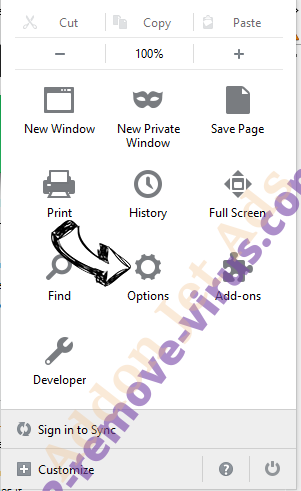
- On General tab delete malicious URL and enter preferable website or click Restore to default.

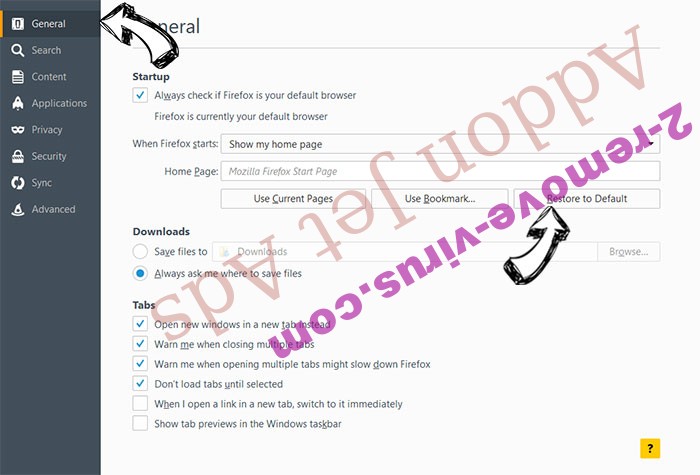
- Press OK to save these changes.
Reset your browser
- Open the menu and tap Help button.

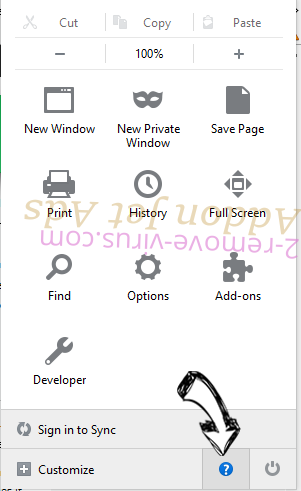
- Select Troubleshooting Information.

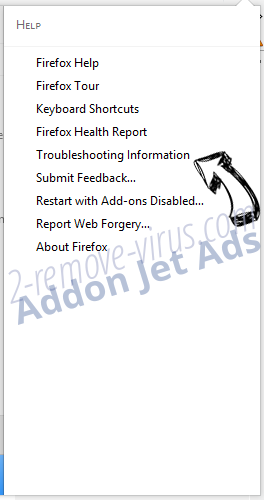
- Press Refresh Firefox.

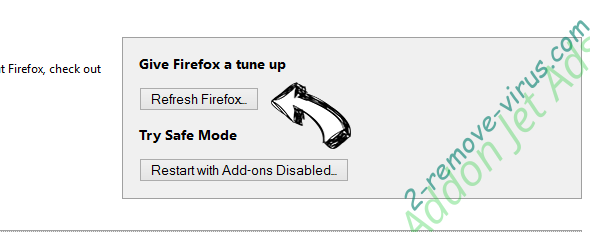
- In the confirmation box, click Refresh Firefox once more.

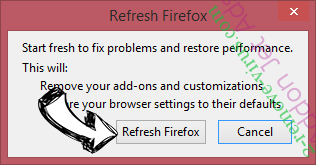
- If you are unable to reset Mozilla Firefox, scan your entire computer with a trustworthy anti-malware.
Uninstall CryptoWall 2.0 from Safari (Mac OS X)
- Access the menu.
- Pick Preferences.

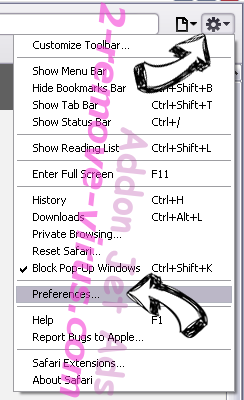
- Go to the Extensions Tab.

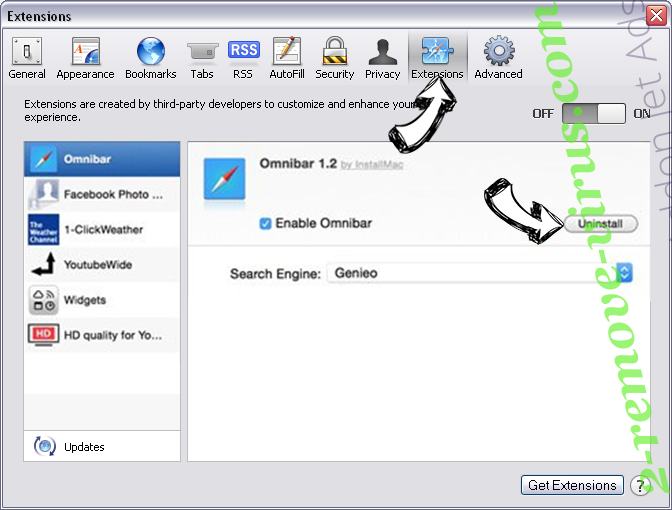
- Tap the Uninstall button next to the undesirable CryptoWall 2.0 and get rid of all the other unknown entries as well. If you are unsure whether the extension is reliable or not, simply uncheck the Enable box in order to disable it temporarily.
- Restart Safari.
Reset your browser
- Tap the menu icon and choose Reset Safari.

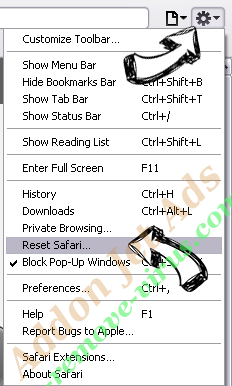
- Pick the options which you want to reset (often all of them are preselected) and press Reset.

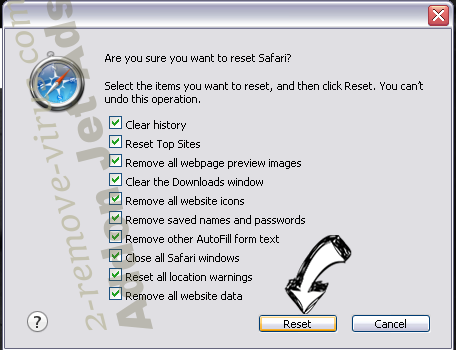
- If you cannot reset the browser, scan your whole PC with an authentic malware removal software.
Site Disclaimer
2-remove-virus.com is not sponsored, owned, affiliated, or linked to malware developers or distributors that are referenced in this article. The article does not promote or endorse any type of malware. We aim at providing useful information that will help computer users to detect and eliminate the unwanted malicious programs from their computers. This can be done manually by following the instructions presented in the article or automatically by implementing the suggested anti-malware tools.
The article is only meant to be used for educational purposes. If you follow the instructions given in the article, you agree to be contracted by the disclaimer. We do not guarantee that the artcile will present you with a solution that removes the malign threats completely. Malware changes constantly, which is why, in some cases, it may be difficult to clean the computer fully by using only the manual removal instructions.
